10 Best Dumbbell Exercises For Chest (Size and Strength)
Let’s be honest, when most of us think of chest exercises we immediately think of Bench Press. Specifically, Bench Press with a bar.
But, what if all you have to work with is a set of dumbbells? For example, you could be in a hotel gym and just be thankful you at least have dumbbells. (Tell me you don’t get fired up when a hotel gym has 50s)
The good news is there are plenty of dumbbell exercises you can use to create a chest workout you can feel good about. Yes, they’ll be some obvious ones like Dumbbell Bench Press, but they’re are many variations of Dumbbell Bench that you may not have thought about.
Enough chit-chat, let’s get into it.
Dumbbell Bench Press
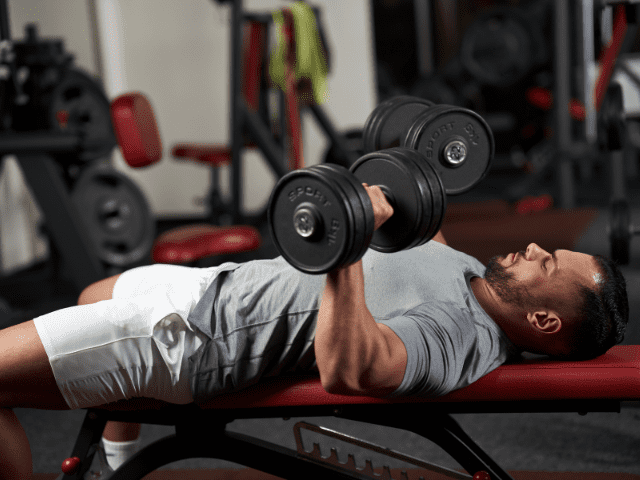
Let’s go ahead and start this list of the best dumbbell chest exercises with the most obvious one, Dumbbell Bench Press.
Dumbbell Bench actually has some advantages over the barbell variation. It can be easier on the shoulders and it’s an isolateral exercise meaning both arms have to work independently. This can help prevent muscular imbalances.
Step-by-Step Instruction
- Choose appropriate dumbbells and lie back on a flat bench, holding them above your chest.
- Hold the dumbbells with a neutral or pronated grip, palms facing forward.
- Begin with the dumbbells at chest height, elbows bent at about 90 degrees.
- Press the dumbbells upward, extending your arms fully above your chest.
- Hold for a brief moment at the top, dumbbells almost touching each other.
- Lower the dumbbells back to the starting position, controlling the movement.
Coaching Points
This is a very shoulder-friendly pressing movement. Because the implement is a dumbbell, the range of motion is increased, the shear force on the shoulder is decreased, and the shoulder stabilizing muscles are engaged.
Dumbbell Bench Press
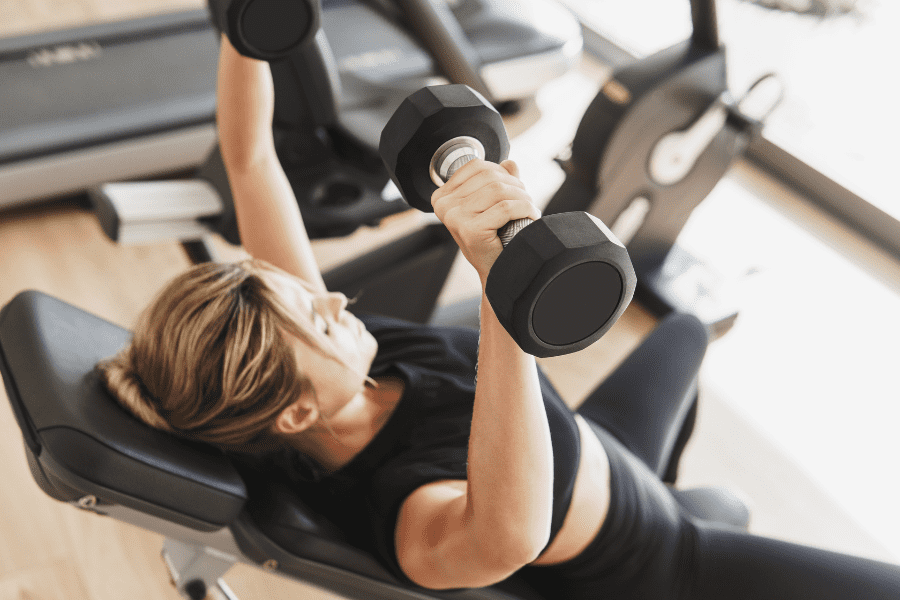
Dumbbell Incline brings many of the same benefits of flat bench, but with more of an emphasis on the upper chest.
Step-by-Step Instruction
- Start by setting an incline bench to an angle of about 30-45 degrees.
- Grab a dumbbell in each hand and sit on the bench. Position the dumbbells at shoulder height with your palms facing forward.
- Lie back on the bench, bringing the dumbbells to the sides of your chest. This is your starting position.
- Press the dumbbells upwards, extending your arms fully. The dumbbells should move in a slight arc, converging at the top without touching.
- Slowly lower the dumbbells back to the starting position in a controlled manner, feeling the stretch in your chest.
- Ensure your feet remain flat on the ground and your back is pressed into the bench throughout the movement.
Coaching Points
Remember as you move your bench up, the more you are engaging the shoulders and less chest. Be sure your angle matches the goals you’ve set for pressing.
This is a very shoulder-friendly pressing movement. Because the implement is a dumbbell, the range of motion is increased, the shear force on the shoulder is decreased, and the shoulder stabilizing muscles are engaged.
Single Arm Dumbbell Bench
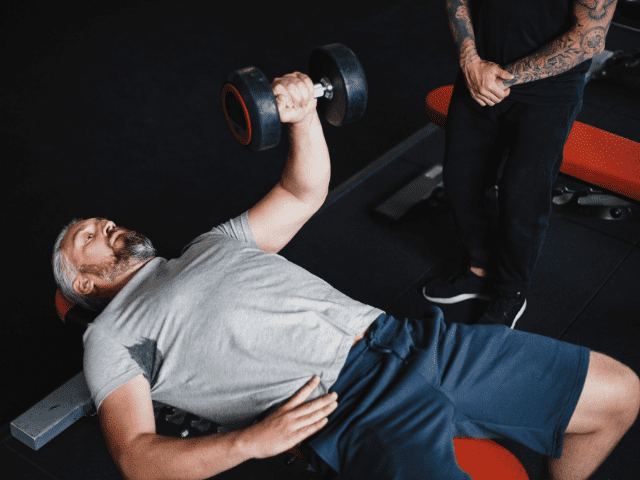
One of my favorite dumbbell chest exercises is the Single Arm Bench. Benching with one arm at a time brings the core into play as it has to work as anti-rotation stabilizer.
If you’re looking to add some variety to your dumbbell chest workout, this is a great option.
Step-by-Step Instruction
- Choose a dumbbell of appropriate weight and lie back on a flat bench.
- Hold the dumbbell in one hand, extending the arm straight above your chest while the other arm is relaxed beside you.
- Plant your feet firmly on the ground and engage your core to maintain stability.
- Lower the dumbbell by bending the elbow, keeping it slightly angled towards your torso, until it’s just above chest level.
- Push the dumbbell back to the starting position by extending the arm, ensuring your back remains flat on the bench.
Coaching Points
If you’re familiar with Dumbbell Bench Press but are new to this single-arm variation, you’ll probably be pretty surprised by just how much you need to brace your core to keep from literally rotating off the bench. For this reason, start light and then work your way up in weight.
This is a very shoulder-friendly pressing movement. Because the implement is a dumbbell, the range of motion is increased, the shear force on the shoulder is decreased, and the shoulder stabilizing muscles are engaged.
Alternating Dumbbell Bench Press
Alternating Dumbbell Bench also incorporates the core, although not to the same degree as the single-arm variation.
However, another unique benefit of Alternating Dumbbell Bench Press is the amount of time under tension it creates. Benching one arm at time for 8 to 10 reps creates a long set and that increased time under tension can turn lighter dumbbells into a tough set.
Step-by-Step Instructions
- Sit on the edge of the bench with dumbbells resting on each thigh.
- Lay back on the bench and press both dumbbells to full extension.
- Now, lower the right dumbbell down to just outside the chest, keeping the elbow at roughly a 45-degree angle to the body.
- Press that dumbbell back up to full extension.
- Next, lower the opposite dumbbell down, same as the first, and press back to extension.
Coaching Points
Hold and stabilize the non-repping arm at full extension and only rep one dumbbell at a time. As the arms begin to fatigue, you may find one (or both) arms start to drift down as you’re repping the opposite arm. Try to keep that opposite dumbbell pressed at full extension!
Don’t turn the movement into a ‘piston-pumping’ type action. I’ll see athletes that will have one dumbbell going up at the same time the other is going down. Keep one dumbbell at extension until the opposite rep is completed.
Dumbbell Fly
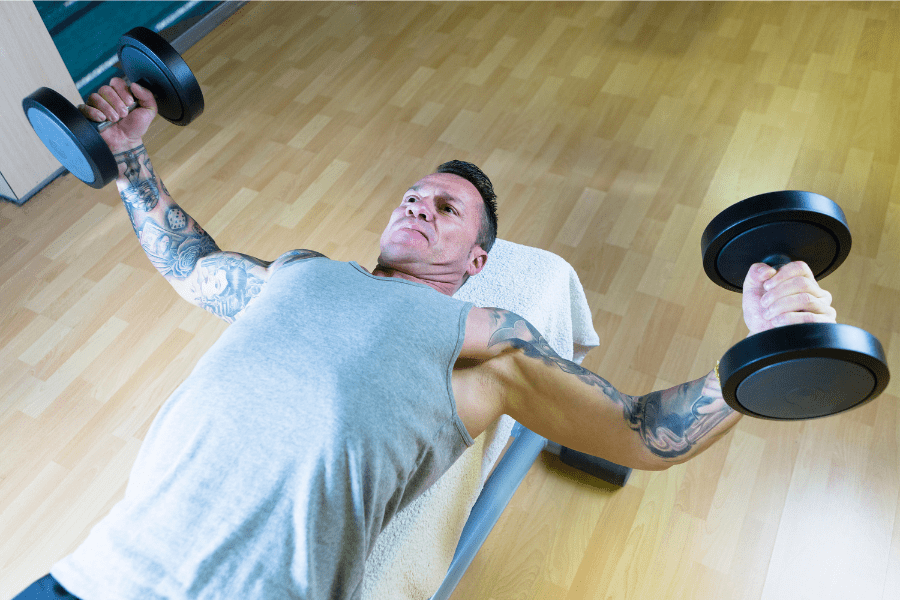
You can’t have a list of dumbbell chest exercises without including Dumbbell Flys, right? They may not build strength like some of the other exercises above, but they can provide a great chest pump and are the perfect option when all you have is light dumbbells to work with.
Step-by-Step Instruction
- Sit on the bench with a dumbbell in each hand, then lay back, positioning the dumbbells above your chest with arms slightly bent.
- With a slight bend in your elbows (imagine hugging a large tree), lower the dumbbells out to the sides in a wide arc. Ensure a controlled motion and feel the stretch in your chest.
- Once you’ve reached a point where you feel a good stretch, reverse the motion by squeezing the chest muscles and bringing the dumbbells back to the starting position.
- Ensure you maintain the slight bend in your elbows throughout the movement, and don’t let the dumbbells touch at the top.
Coaching Points
Dumbbell Fly should not be done with heavy weights. Stay relatively light, keep the movement very controlled and focus on the stretch.
Dumbbell Incline Fly
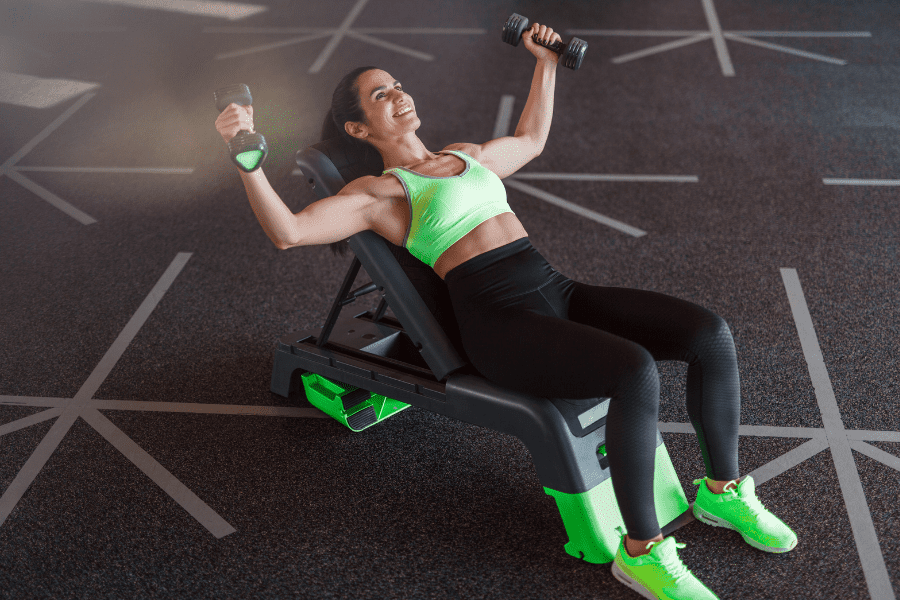
If you’ve only tried the flat bench version of Dumbbell Flys, then you definitely need to give Incline Dumbbell Flys a shot. You get a huge stretch on the upper chest and they’re a great option to finish off a chest workout.
Step-by-Step Instruction
- Begin by setting an incline bench to an angle of about 30-45 degrees.
- Sit on the bench with a dumbbell in each hand, then lay back, positioning the dumbbells above your chest with arms slightly bent.
- With a slight bend in your elbows (imagine hugging a large tree), lower the dumbbells out to the sides in a wide arc. Ensure a controlled motion and feel the stretch in your chest.
- Once you’ve reached a point where you feel a good stretch, reverse the motion by squeezing the chest muscles and bringing the dumbbells back to the starting position.
- Ensure you maintain the slight bend in your elbows throughout the movement, and don’t let the dumbbells touch at the top.
Coaching Points
Remember as you move your bench up, the more you are engaging the shoulders and less chest. Be sure your angle matches the goals you’ve set for pressing.
Flys should not be done with heavy weights. Stay relatively light, keep the movement very controlled and focus on the stretch.
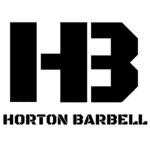
Tired of coming up with your own workouts? But don’t want to pay an arm and a leg?
I post workouts 5 days a week right here. (Did I mention they’re free?)
Dumbbell Floor Press
Dumbbell Floor Press is a dumbbell chest exercise that doesn’t even require a bench. I didn’t have a bench in my garage gym for almost a year and exercises like Dumbbell Floor Press became a staple in my workouts.
Step-by-Step Instructions
- Sit down on the ground with dumbbells in each hand.
- Lay on your back with knees bent, feet flat on the floor.
- Engage your lats and set yourself up basically the same as you would for Dumbbell Bench Press.
- Lower the dumbbells down until the triceps lightly tap the floor and then press it back to extension.
- Keep the elbows at roughly a 45-degree angle to the torso (don’t let them flare out wide away from the body).
Coaching Points
A good spotter can be worth their weight in gold to help you get set up (and even take one dumbbell at the end of the set). This becomes more true the heavier you get in weight.
Control the rep down to the floor and lightly tap the floor with your triceps. Don’t go crashing your arms into the floor and unnecessarily hurt yourself in the process.
Dumbbell Pullover

Dumbbell Pullover often gets overlooked as a chest exercise. Maybe you think of it as an exercise for the lats or the serratus anterior (which it is), but it also does a good job of hitting the chest.
How To
- Lay on a bench with the top of your head all the way to the edge of the bench.
- Make a diamond shape with your hands and place them on the inside of one of the heads of the dumbbell.
- Press the dumbbell to arm’s length straight up over the chest.
- Now, reach the dumbbell overhead (allow some bend in the elbow) until your hands are about even with the height of the bench.
- Finally, pull the dumbbell back to the starting position.
Coaching Points
This exercise will give a deep stretch to the chest and triceps on the lift’s eccentric (lowering) phase. Stay slow and controlled and focus on the stretch followed by the strong contraction as you raise the dumbbell back to the start.
Drawbridge Drop Set
If you’re thinking to yourself, “I don’t think I’ve ever heard of a Drawbridge Drop Set” it’s because you haven’t. I just made up the name.
However, although the name is made up, the actual exercise is something I’ve been doing forever – especially when limited on the weight of dumbbells I have access to.
Here is how it works:
First, you’re going to need a partner. Grab a set of dumbbells and set an adjustable bench up to 90 degrees.
Rep out 8 to 10 reps or whatever you think makes the most sense depending on the size of dumbbells you have.
Now, sit up tall (off the bench) so your partner can adjust the bench down to 45 degrees. Lay back and do another 8 to 10 reps.
Sit back up and have your partner now lay the bench down flat. Lay down and hit another 8 to 10 reps.
Your rest is only the amount of time it takes your partner to adjust the bench.
If you get the weight and reps correct, this “drop set” will absolutely smoke your chest, shoulders and triceps.
Push-Ups
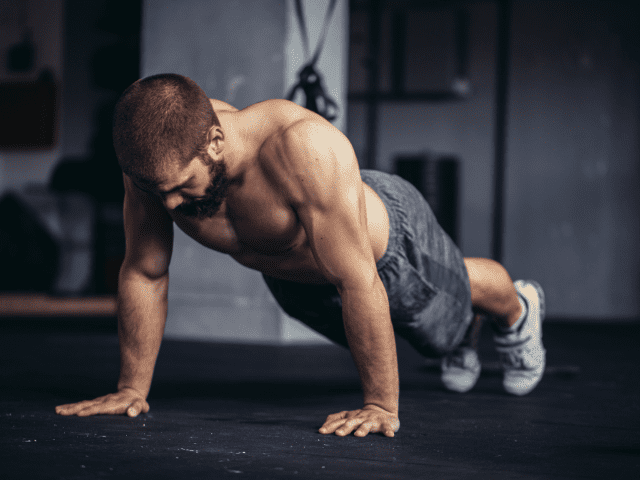
I know, I know. Push-Ups are not a ‘dumbbell’ exercise (although technically you can do push-ups with your hands on a set of dumbbells). However, there is a reason I’m listing them here.
I’m guessing there are some on this page because you’re limited to dumbbells and you’re looking for effective exercises that you can use to still get in a great chest workout. Well, I believe Push-Ups are the most undervalued chest exercise there is because they’re not fancy and they’re not complex.
Push-ups also require zero equipment so why not include them with your dumbbell chest workout?
Step-by-Step Instruction
- Begin in a plank position, hands slightly wider than shoulder-width apart, and feet together or slightly apart. Your body should form a straight line from head to heels.
- Bend your elbows, lowering your body towards the floor while maintaining a straight spine.
- Get as close to the floor as possible without touching it with your chest.
- Extend your elbows, pushing your body back to the starting position.
Coaching Points
Take your time and master the push-up. The benefits of doing sound push-ups will pay dividends for your shoulder health and the potential to maximize your upper body strength.
Keep the elbows at a 45-degree angle. For maximal chest, shoulder, and rotator cuff engagement, do not let the elbows flare out away from the middle. Also, do not let the elbow hug right next to the torso.
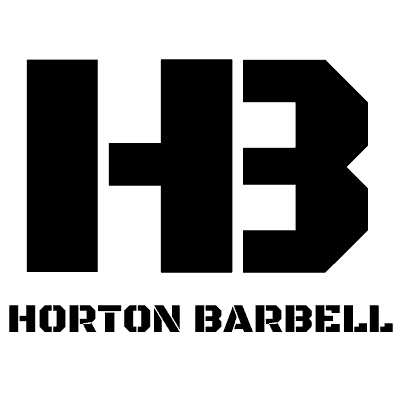
Get Shredded… For Free
Get a free workout Monday through Friday, posted right here on Horton Barbell. These workouts are designed to help you get strong, in shape and look great at the beach!
Final Thoughts
Whether you have a barbell, dumbbells, resistance bands or even no equipment at all – you can also put together enough exercises to get in a great workout if you’re determined and creative enough.
I hope this list of dumbbell chest exercises gave you a few ideas that you can incorporate into your workout.
More Links and Info
Finally, if you want to finish off your chest workout with some arms (because why wouldn’t you?) here are some of the best dumbbell exercises you can do for arms.
Or, pair up your chest exercises with some of my favorite dumbbell exercises for your back.

